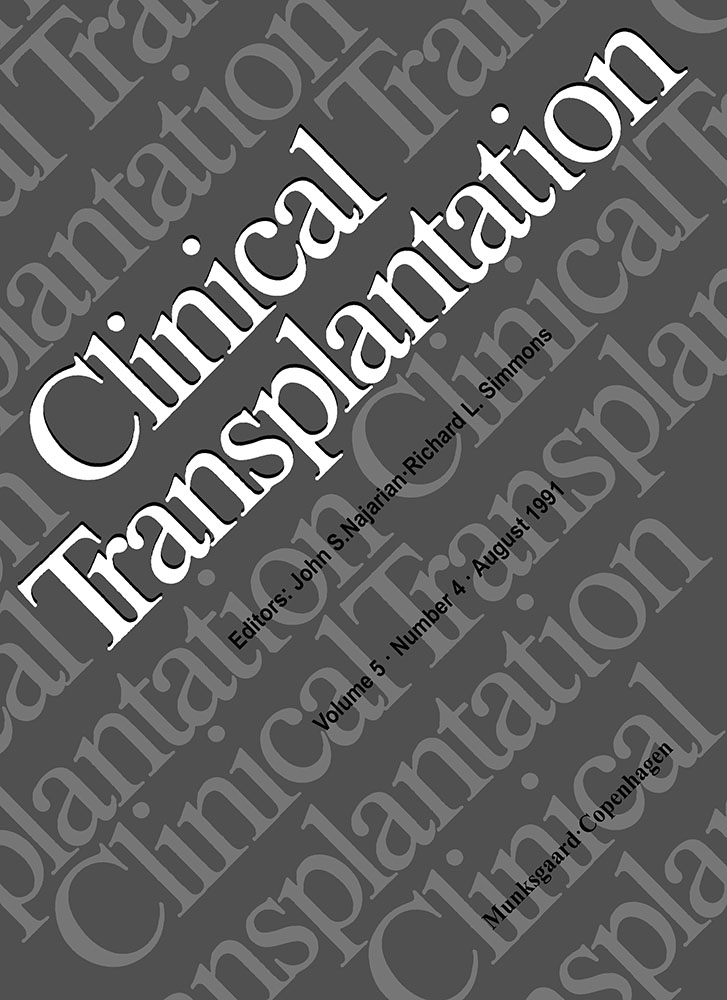Ganciclovir therapy for viral disease in liver transplant recipients
Abstract
With current immunosuppressive regimens, viral disease has become an important source of morbidity after orthotopic liver transplantation. Over a 5-year period, we retrospectively analyzed 422 liver transplants in 370 recipients (242 adults, 128 children) under cyclosporine and prednisone immunosuppression. A total of 108 patients (29.2%) received intravenous ganciclovir for viral disease, including 103 for cytomegalovirus (CMV) disease and 5 for Epstein-Barr virus (EBV) disease. A total of 132 episodes of CMV disease (103 initial, 29 relapse) were treated with ganciclovir, including 22 patients with primary CMV disease. Opportunistic viral hepatitis was the most common clinical presentation of viral disease while recurrent disease often involved extra-hepatic sites (especially pulmonary). The majority of cases of viral disease (both initial and relapse) were confined to single organ involvement (81.0%), at which time ganciclovir therapy was begun at a dose of 5 mg/kg twice daily for 2 weeks (with dosage adjustments for renal dysfunction). The initial diagnosis of CMV disease was made at a mean time after transplantation of 38 days, with a mean duration of ganciclovir therapy of 16 d. A prompt and lasting response, characterized by clinical improvement and negative viral cultures, was documented in 74 cases (71.8%). Fourteen additional patients were successfully retreated with ganciclovir for CMV relapse, so that CMV disease was ultimately controlled in 85.4% of cases. EBV disease was diagnosed at a mean time of 124 d after transplantation, with a mean duration of ganciclovir therapy of 39 d. Four cases (80%) were successfully treated. Overall patient survival after ganciclovir therapy is 79.0% with a mean follow-up of 24 months. Adverse drug effects included significant leukopenia and thrombocytopenia in 7 patients (6.5%), with 2 requiring drug withdrawal. Conclusion: ganciclovir is a safe and effective agent for the treatment of viral disease in liver transplantat recipients. The availability of ganciclovir has resulted in successful treatment of viral disease without dramatic reductions in immunosuppression, thus permitting successful rescue of the patient and allograft with an acceptably low incidence of toxicity and viral relapse.




